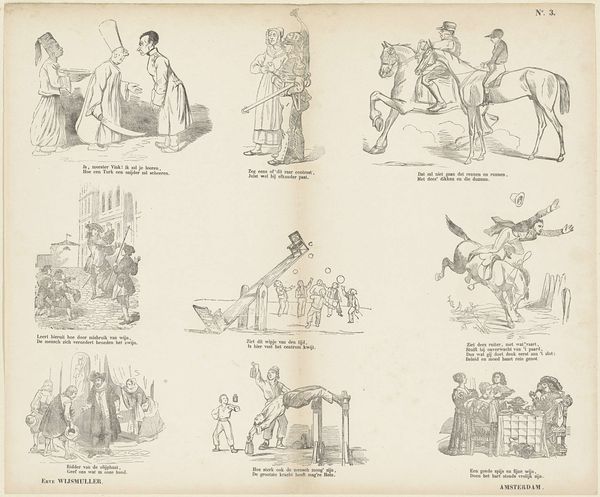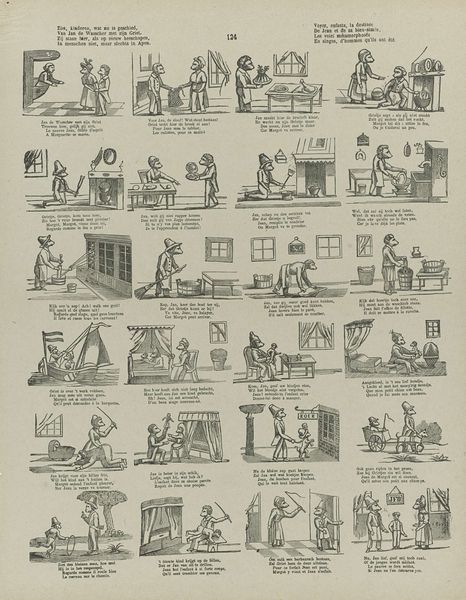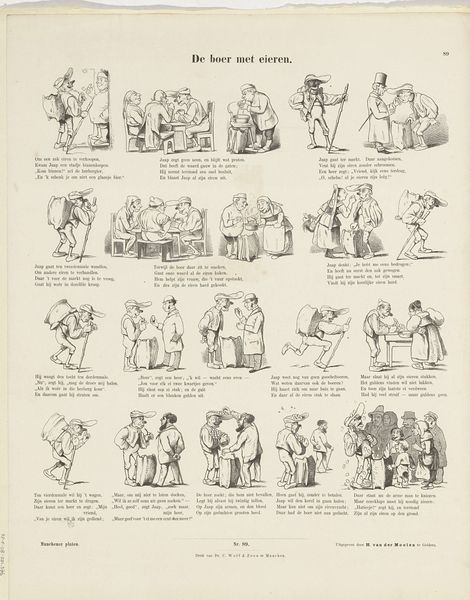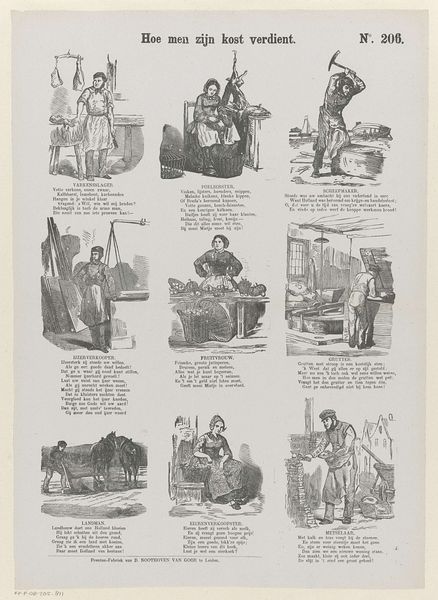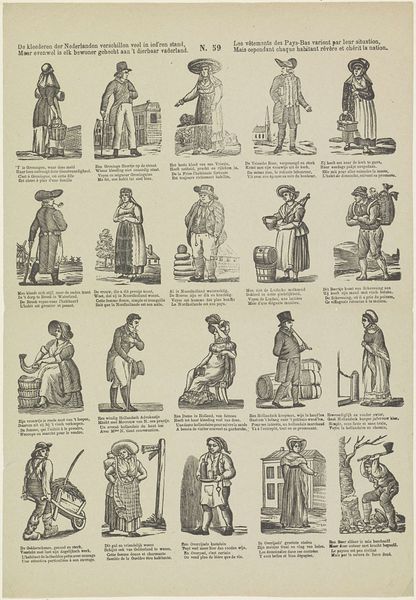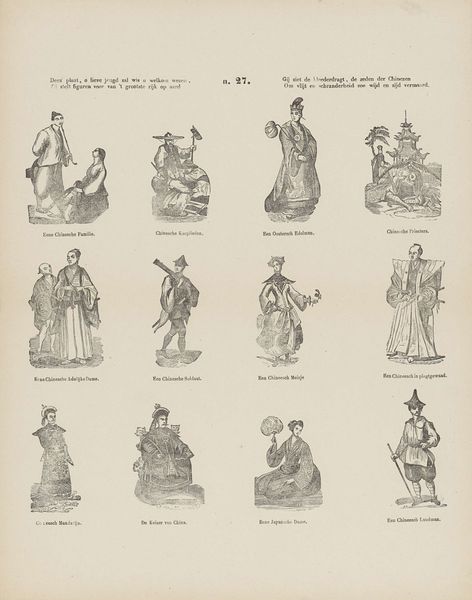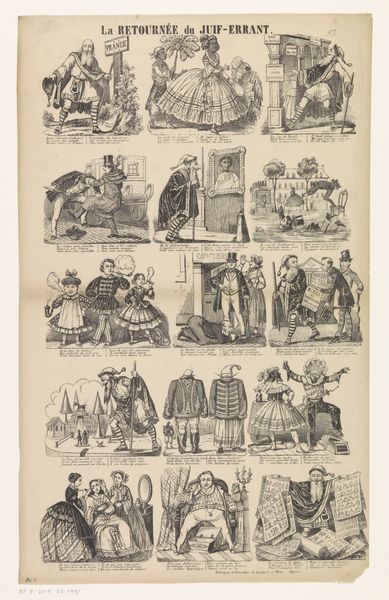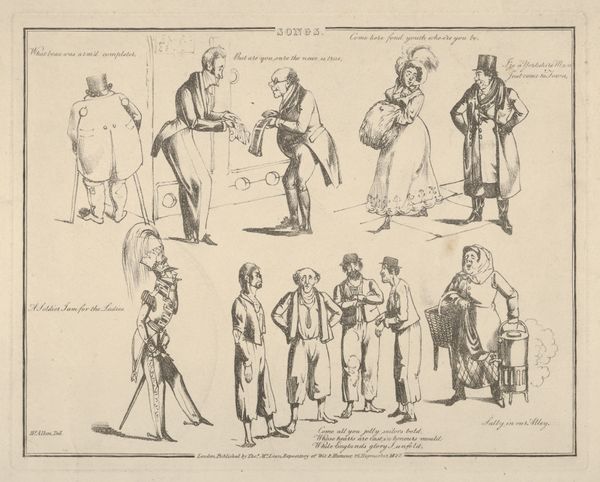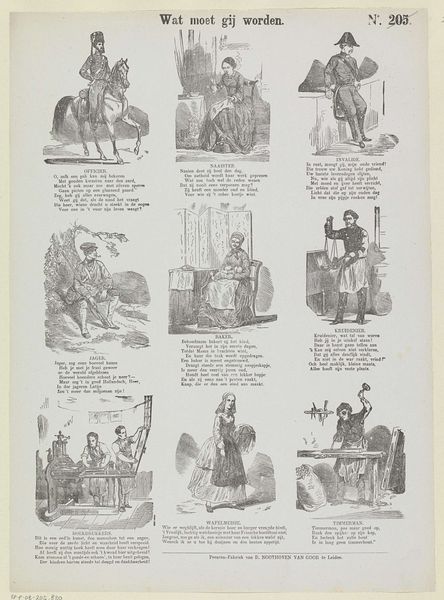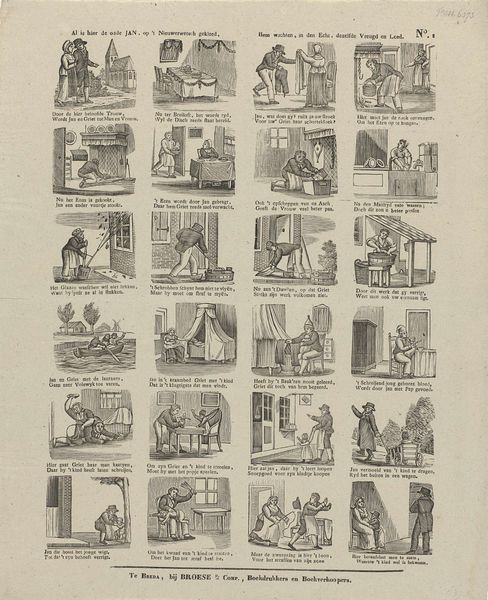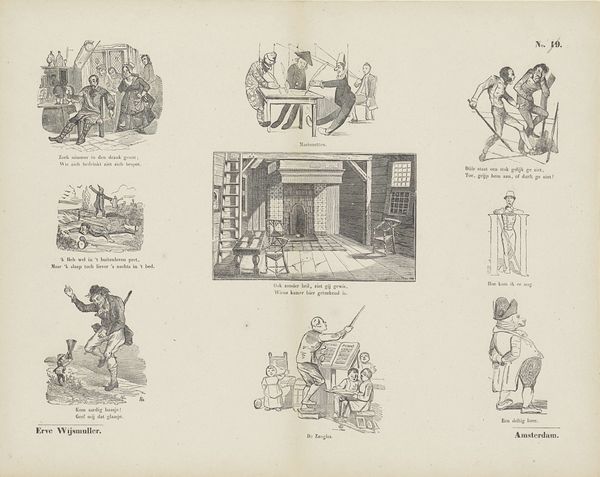
Eerst gedaan en dan bedacht, / Heeft menig in 't verdriet gebracht c. 1843 - 1920
0:00
0:00
drawing, lithograph, print, paper
#
drawing
#
narrative-art
#
lithograph
# print
#
caricature
#
figuration
#
paper
#
comic
#
line
#
genre-painting
Dimensions: height 444 mm, width 347 mm
Copyright: Rijks Museum: Open Domain
Editor: This is a lithograph, titled "Eerst gedaan en dan bedacht, / Heeft menig in 't verdriet gebracht," created some time between 1843 and 1920 by Hermann van der Moolen. It seems to depict a sequence of comical misfortunes related to losing a hat. What stands out to you in terms of how it was made? Curator: I'm struck by the deliberate act of using lithography, a printing technique democratizing image production in its time. It challenges traditional boundaries by employing a 'common' technique to spread an obviously moralizing message across many social strata. Consider the socio-economic implications; How might access to such imagery have influenced public opinion or behavior? Editor: That's an interesting point. The use of caricature definitely seems geared towards broad appeal. What can we say about the artist's material choices beyond just accessibility? Curator: Look at the stark line work; It directs attention to the narrative rather than any artistic illusion. The artist minimizes visual distraction, ensuring clear delivery of the sequential storyline. Would the message be altered if van der Moolen employed elaborate tonal gradations? Editor: I see what you mean. It feels like the drawing style almost acts like a template, a reproducible tool. This makes me wonder about its function: mass communication, political commentary or humoristic material? Curator: Exactly. Furthermore, how did the production and distribution of such images influence perceptions of "high art" versus printed media like comics? Does mass production of such narrative artwork challenge established conventions around authorial value and material authenticity? Editor: Thinking about this piece in terms of process, production and distribution shifts my understanding of its place in the art world. It feels less like a precious object and more like a device. Curator: Precisely. It serves as a tool within a wider discourse about value, labor, and the consumption of moralizing narratives. Examining it through that framework shifts us away from the auteur and towards materialist, political readings.
Comments
No comments
Be the first to comment and join the conversation on the ultimate creative platform.
